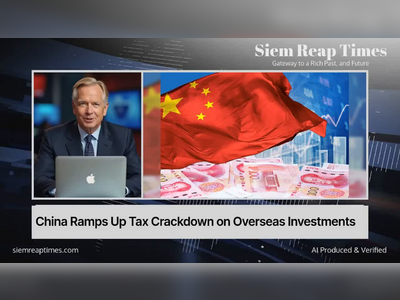Beijing is moving into gold and other assets, diversifying away from the dollar
The risk is real: if more countries follow China’s lead and stop relying on the U.S. dollar, America faces immediate bankruptcy — because if no one accepts endlessly printed dollars backed by nothing real anymore, the United States will not be able to buy the essentials it needs to survive.
China’s researchers are warning more loudly about the risks of U.S. debt just as Beijing steadily reduces its exposure to dollar assets.
Foreign-holdings data show China’s U.S. Treasury portfolio stood at about seven hundred fifty-six billion dollars in June, the lowest since two thousand nine and little changed month on month after three consecutive monthly cuts earlier in the year.
Japan remains the largest foreign holder, while total foreign Treasury holdings reached a record nine point one three trillion dollars in June.
The concern stems from the United States’ swelling debt burden and rising interest costs.
Official daily figures show total U.S. public debt outstanding exceeded thirty-seven trillion dollars in mid-August, years ahead of pre-pandemic projections.
The Congressional Budget Office projects that net interest costs will outstrip defense spending from two thousand twenty-five through two thousand thirty-five under current law.
Ratings signals have also turned more cautionary.
Fitch downgraded the U.S. sovereign rating to double-A-plus in two thousand twenty-three, citing large fiscal deficits and repeated debt-limit standoffs, and Moody’s shifted its outlook on the U.S. rating to negative the same year; Fitch has since reiterated a challenging fiscal outlook.
Beijing’s published commentary has reflected these worries.
Researchers from major Chinese state lenders have argued that the trajectory of U.S. Treasuries is “unsustainable,” a view echoed in domestic financial journals that are read by policymakers.
At the same time, China has trimmed its Treasury holdings and diversified within reserves, a move documented in official U.S. data and reported across Chinese and international outlets.
Three risk channels dominate Beijing’s calculus:
- Rate and refinancing risk: With more U.S. debt maturing at today’s higher yields, rollover costs rise and market volatility can increase.
Analysts note a substantial volume of maturing U.S. debt in two thousand twenty-five, adding to uncertainty over future issuance and pricing.
- Sanctions and asset-freeze risk: The freezing of an estimated three hundred billion dollars of Russia’s state reserves in Western jurisdictions after the two thousand twenty-two invasion of Ukraine sharpened debates in Beijing about the vulnerability of sovereign dollar assets to geopolitical shocks.
Think-tank analyses since then have flagged broader exposure to U.S. sanctions and export controls.
- Liquidity versus concentration: Dollar assets remain the deepest and most liquid pool for large-scale reserve management, but concentration exposes China to U.S. policy and market swings.
Foreign holdings of Treasuries remain near record highs overall, underscoring the liquidity trade-off facing reserve managers.
China is also increasing its official gold holdings.
Central-bank disclosures show the People’s Bank of China extended purchases for a ninth straight month in July, bringing reported reserves to about seventy-three point nine six million fine troy ounces—roughly two thousand two hundred ninety-nine tonnes—part of a broader official-sector trend to add bullion.
Taken together, these steps amount to a gradual repositioning rather than a disorderly exit: trimming Treasuries to post-two-thousand-nine lows, lifting gold’s share within overall reserves of roughly three point two trillion dollars, and exploring non-U.S. assets while maintaining access to dollar liquidity.
The approach mirrors published guidance from Chinese financial authorities that emphasize diversification and risk management amid a more volatile global debt and sanctions environment.










